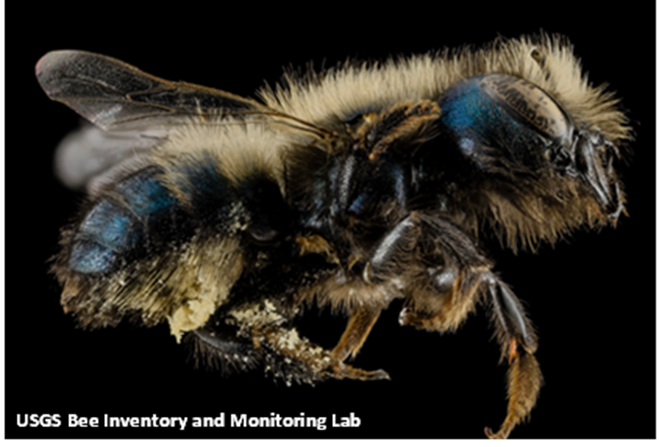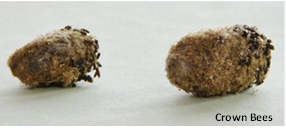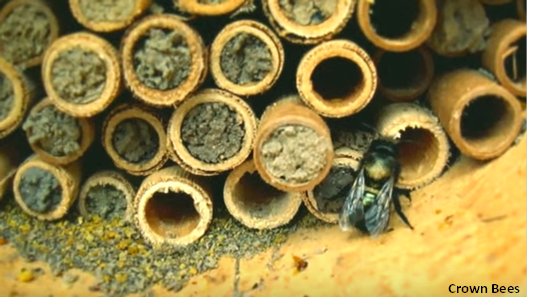Mason Bees
The CREC is trying out mason bees, Osmia lignaria, this year, aka: blue orchard bees or orchard mason bees. These are wild bees that can easily be managed by humans. Mason bees are native to places that have the plants they need as well as the clayey-mud needed to construct the brood cells (hence masons). They are not really native to the Plains. The benefit of these bees is that they are 100-times more efficient than honeybees and require very little work to maintain. Mason bees love plants in the Rosaceae family which include most of our fruit plants. Just a handful of mason bees can pollinate an entire large apple tree in full bloom.

Our little bees have been waiting for this warm weather. A few weeks ago, they arrived by mail from Crown Bees in Washington. They are still hibernating in their little cocoons in the refrigerator but they are going out to the orchard as soon as something starts to bloom.

Willow pollen is one of their favorites, and this is a very important early tree to bees and birds; bees for the pollen and birds for the little insects that are drawn to the flowers.
Why would an orchard choose wild bees over honeybees? The primary reason is for their efficiency. Wild bees like mason, leafcutter and bumble bees have a goal of gathering pollen to sustain their offspring. Because of this, they are super fuzzy and aim right for the pollen when they land on a flower. Every time they land on a new flower all that pollen gets mixed around on both the bee and the flower. A honeybee’s goal is nectar; pollen structures are generally avoided and though some pollen is gathered, it is soon wetted and stuck to the bee’s hind legs. Most pollen exchange actually happens at the hive when bees touch each other!
All bees are in trouble due to loss of habitat, warming climate and insecticides (and here). Human-managed social honeybees and semi-social bumblebees can carry diseases that hurt themselves as well as transfer these diseases to wild bees via shared flowers and contact.
Wild bees like mason bees can have problems, too. They gather together but live and make their brood cells independently. We help them avoid insect pests and funguses by taking their cocoons out of the nesting material and cleaning them up each fall. It is very important to use nesting material like reeds, paper tubes and grooved wooden blocks that can be taken apart. Then the bee cocoons can wait safely in the refrigerator all winter as they get ready for next season’s work.

It’s a really BAD idea to use logs, blocks and bamboo that can’t be cleaned. “Bee hotels” are great in theory, but if you can’t clean the bees and structures each fall, insects and funguses build up and will eventually kill the bees.
Stay tuned to our Facebook page to see how the bees are doing this spring!
Cool insect pictures from USGS: https://www.flickr.com/photos/usgsbiml/page1
Bee news from The Xerces Society: https://www.facebook.com/bumblebcons/
Kathy Wiederholt
Fruit Project Manager


